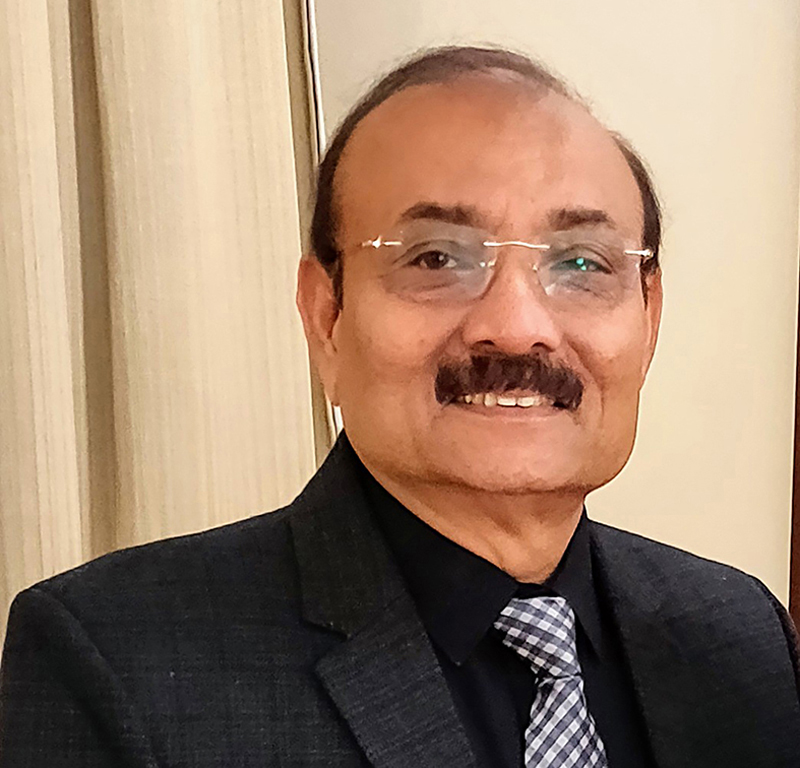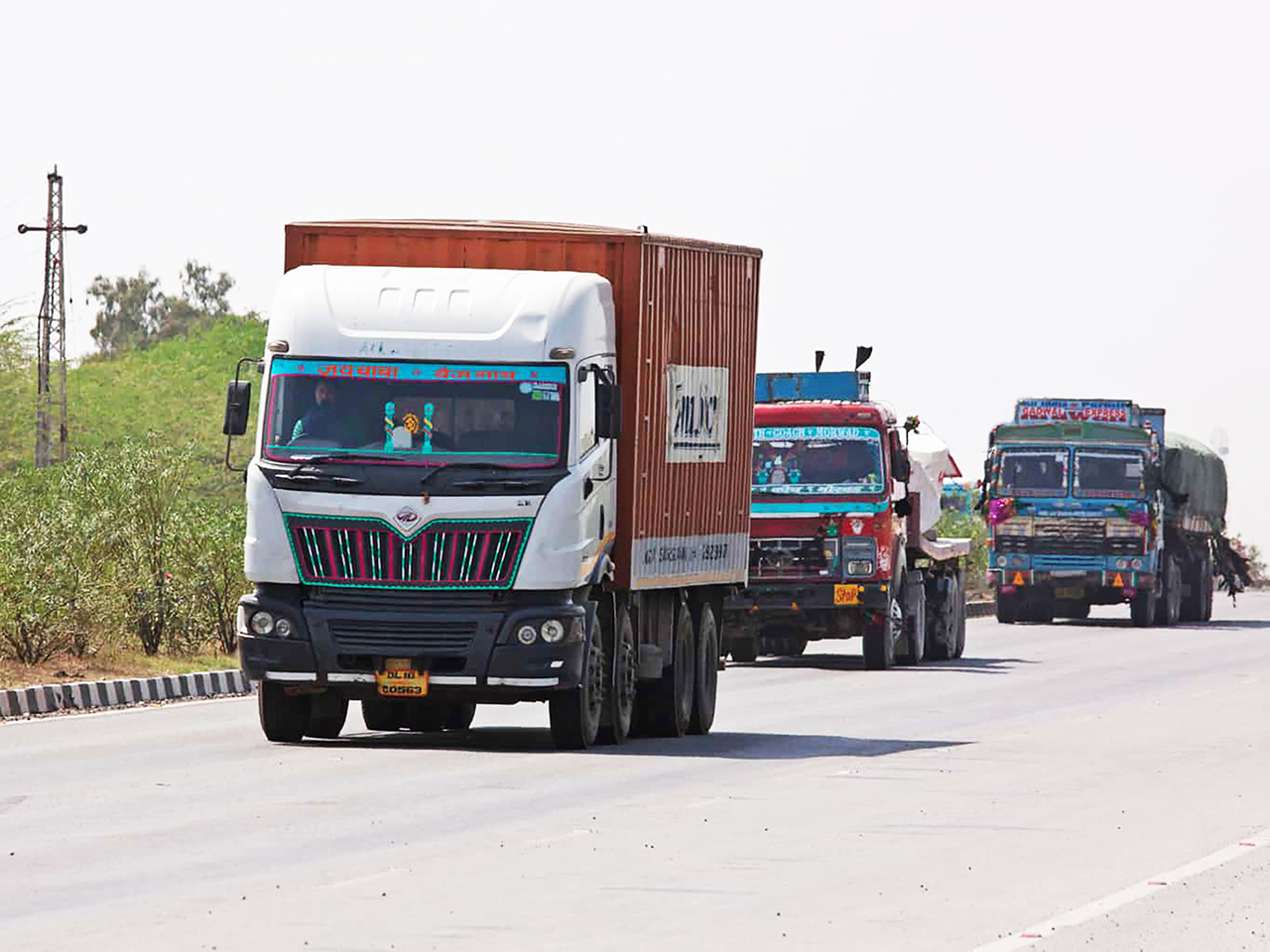There is a need to transform the mindset from ‘Just-in-Time’ to ‘Just-in-Case’ to meet an uncertain world. The transformation mantra of 5R can be adopted by each functional area in the changing environment so as to remain ever ready to meet any challenge in present or future business situations, suggests Umesh K. Jhamb

Out-of-box strategies and business approaches developed previously to meet the VUCA (volatility, uncertainty, complexity and ambiguity) challenges proved helpless against the century’s worst onslaught by the pandemic. The corona virus has further mutated into various forms like the Delta variant, etc. in most of the locations the world over, leading to unbelievably tough and complex situations with various waves continuing the onslaught. This caught everyone napping including the tough ones since the pandemic has proved to be unpredictable, unprecedented, scary and superfast.
The only answer to face this was complete lockdowns and to remain safe behind the walls of one’s own home and remain wherever one got stuck to avoid the highly contagious spread of this deadly virus. This protected life but virtually killed the livelihood. This situation seems to be like re-inventing the wheel since there was no past learning or medical experience to handle such a situation in the last 100 years. The often quoted statement, “When the going gets tough, the tough get going” also lost its relevance even though the world began to research to make breakthroughs in vaccination, considered to be the only answer to save the world and revive the economic activities.
Indian Context
The Indian economy was already experiencing a recessionary trend from the beginning of FY 2019-20, which was a serious concern to overcome. Experts and industry pundits were predicting great revival. For example, the expected performance of the commercial vehicle (CV) industry, which is a true reflection of the state of economy of any country, was badly hit and got completely disrupted with the pandemic that unleashed its force in February 2020, forcing a nationwide lockdown leading to complete stop on ‘as is where is basis’ policy as part of crisis management to protect life.
However, this shock was unbearable and pushed everyone to a helpless situation of wait and watch. The worst is that while industry pundits, corporations and economists were trying and exploring ways to recover with gradual unlocking during 2020-21 after severe beating in the first phase, the second wave appeared in early 2021-22, again forcing the chain reaction of random lockdowns after realising the scarcity of health infrastructure, shortage of medicines and vaccinations, which has now triggered the debate of the third wave versus government preparedness with a big question of ‘what in case it spreads?’
Emerging Opinion
World over an opinion seems to be building that this virus can’t be eradicated completely but can be controlled through vaccination so that people can be made immune to its effects. This is leading to a new norm of life – to coexist with proactive steps, precautions and faster vaccinations across the country to check the spread with the resolve that the show must go on. The economic cycle has to be accelerated to ensure protection of both life and livelihood for a healthy and prospering country.
Way Forward
Keeping the above background in view, every economist, corporations both national and international, policymakers and governments needs to introspect about what was overlooked and what were the basis of forecast and projections to accelerate the growth cycle while forgetting the nature’s basic law of maintenance of the ecological balance. The world progressed with aggressive growth plans adopting the Just-in-Time business model to achieve economies of scale to remain competitive but missing one very important element of Just-in-Case if there is a natural disaster or pandemic like situation.

For example, the CV industry, which is a true mirror image of the health of the economy as it moves goods, services and people to accelerate the spread of prosperity for achieving stronger economic fundamentals, got totally derailed. During 2019-20 the CV industry crashed by 20% with declining sales volumes to the level of 5-7 lakhs, same as that of a decade back during 2009-10. This followed by the pandemic’s spread which resulted in a complete stop in the first quarter of April-June 2020 with no sales, no production and no revenue with negative bottom-line leading to loss of livelihood putting pressure even on how to protect life.
However, the industry showed courage to meet challenges with the government’s support being announced, and started recovering with a very optimistic growth projection during 2021-22, forgetting the previous year’s lessons. Projections were made for exponential growth during 2021-22. For example, IMF projected GDP growth of 12.5%, Crisil projected 35% growth in the CV industry based on the government’s optimism, thus leading to encouraging and positive sentiments. Unfortunately, FY 2021-22 also began contrary to expectation and projection.
Transformation
With the experience and now learning the hard way there is a need to introspect and transform to bring changes in the mindset of planners and policymakers from the approach of Just-in-Time to Just-in-Case when planning for the future, whether it is investment, expansion of capacities, new product development, logistics, aggressive growth plans, business strategies etc. There is a need to transform the mindset. The new mantra to transform the mindset can be based on the 5Rs i.e. relook, review, resolve, revalidate and reward. The mantra can be adopted by each function and each department while planning for the future.
Given that I hold various responsibilities in marketing functions in the automotive industry, I feel that marketing departments have to reorganize, think afresh on strategies and manpower, initiate innovative schemes and contests, change the basis of forecasting, create new targets, etc. to lead the organisation and help the management to sustain and grow the enterprise within the scope of the optimized resources as follows:
Organisation
• Establish merit-based lean, skilled and intelligent leadership considering the joint responsibility of sales and marketing.
• Hire minimum support staff at the head office and consider decision-making process based on data only.
• Consider flattening the hierarchical levels to minimise the supervision and to ensure faster communication.
• Frontline sales team can be outsourced on contractual basis with combination of fixed and variable compensation to bring down fixed costs.
• Ensure strictest monitoring on discipline and honesty for long-term professional growth.
Business Plan
• Business plan must be short-term and long-term, subdivided into monthly, quarterly, half yearly and yearly to bring in flexibility of correction.
• Targets should be realistic and stretched to the extent of potential opportunity and clearly communicated.
• Targets should be subdivided on area basis and on channel partner basis for flexibility in fixing targets locally but without compromising on top-lines and bottom-lines finalised for the company.
Business Policies
• Company’s system and procedure should be customer-friendly and transparent so as to make these trustworthy by channel.
• Rewards and special bonus must be in built to reward the performers as well as recognise those who promote company brand.
• Consider provision for allocating cooperative budget to encourage localised promotion with giving responsibility to channel partners for its success.
• Consider earmarking budget for social causes like tree plantation, health check-up, vaccination drive, education, etc. to enhance the company’s respect as well as brand image as a responsible corporate citizen.
Prices
•Prices should be fixed based on market’s acceptability for the brand premium, product USP and differential to make this value for money and competitive which does not mean cheap or low price.
Distribution Network Management
•Continuous expansion of quality channel partners and their performance review must be made an important policy point to ensure wider reach and deep penetration to ensure product’s availability to the last customer for achieving better market share.
• Channel can be both wholesalers and leading retailers with the objective to serve end customers well.
• Company should ensure that its channel partners have the best possible ROI in its product range versus identified competitors and ongoing industry practice.
Contests and Recognition
• Periodic offer of reward and recognition scheme or contest should be considered as an important element of marketing strategy as this maintains the excitement and motivate the channel partners, end users, and/or end sellers to exert more efforts to promote for not only earning more but also earning the recognition which improves self-respect along with feeling proud with company association.
• Contests and schemes can be short term depending on the prevailing market situations to meet the emerging challenges.
Overview of Future Business Opportunities
• Marketing must keep a close watch and keep analyzing development of the business in near and long term future with respect to newer products and technologies to meet the challenges of changing demand patterns based on market feedback as well future infrastructure investment and development , policy changes by the government to make the company future-ready.
• All new developments should be communicated to the channel periodically to ensure continuity of stronger and closer relationships within the company to create a win-win situation for both as partners in progress.
—
About the author
Umesh Jhamb is currently a Mentor & Advisor, Strategist, Writer and Speaker, with 40+ years of professional experience in marketing in automotive, auto component and tractor industry. During the last 25 years, he has successfully held top positions such as Country Head in Marketing both in National and multinational companies and continues to guide companies in the auto component and aftermarket space.